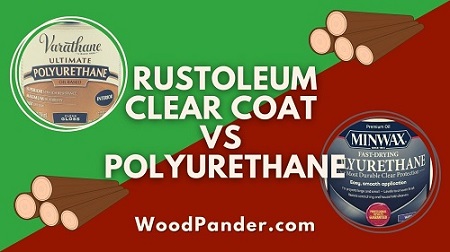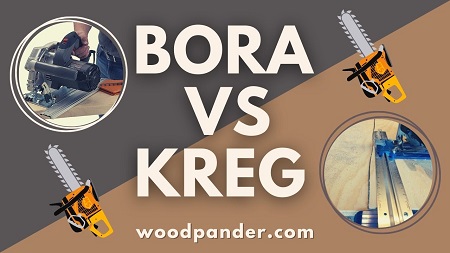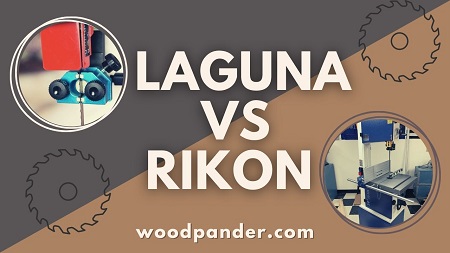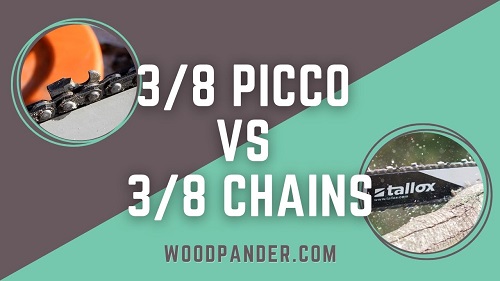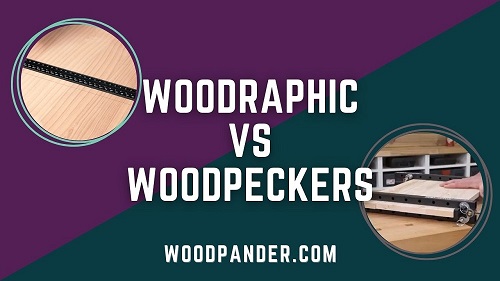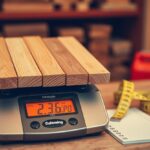Among the wood sealers, Anchorseal is one of the famous names. But as Anchorseal 2 comes into the market, it is pretty confusing what’s the difference between Anchorseal Vs Anchorseal 2.
The main difference between the two is that Anchorseal 2 is an eco-friendly option, whereas the original Anchorseal doesn’t have eco-friendly features. On the contrary, Anchorseal 2 is more stable and easier to use than Anchorseal.
However, this is the only tip of the iceberg. Ready for the detailed discussion? Then continue reading and find the right answer to your confusion.
Let’s begin.
Anchorseal vs Anchorseal 2: A Quick Comparison Table
Look at this short comparison table and identify the main differences between Anchorseal vs Anchorseal 2.
| Differences | Anchorseal | Anchorseal 2 | Winner |
| Product Type | Not eco-friendly | Eco-friendly | Anchorseal 2 |
| Ease Of Application | More eiser | Less eiser | Anchorseal |
| Stability | More stability | Lack of stability | Anchorseal |
| Cost | Cheaper | Costlier | Anchorseal |
One of our articles –How To Bend A 2×4 Wood?
Hopefully, this quick overview will help you to understand the primary differences between both sealers better. Now let’s move on to the in-depth comparison.
Overview of Anchorseal Classic
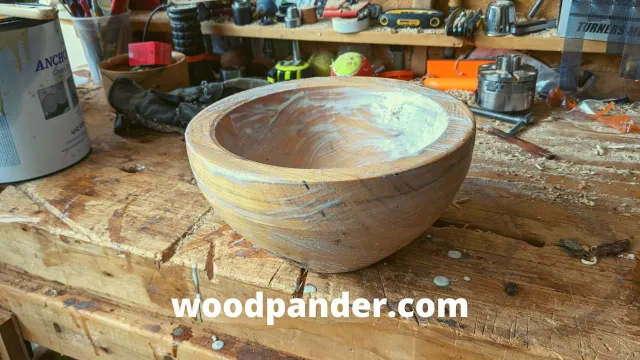
Anchorseal classic is the premium wax emulsion end sealer. It works to prevent end checks and drying splits in softwood and hardwood logs and lumber.
Great For Use On
- Veneer logs
- Turning blanks
- Log cookies
- Hardwood logs and lumber
- Softwood logs and lumber
Features
- Improve yield with less waste
- Non-hazardous and no solvents
- Available in summer and winter formulas
- Clear and more than 35 available colors
- 5 Kinds of packaging sizes including
- 1 Quart Can
- 1 Gallon Can
- 5 Gallon Pail
- 55 Gallon Drum
- 275 Gallon Tote
Pros
- Water-based formula
- Reduce blue stains and sapstain in logs
- Cheaper for low-budget woodworkers
- Prevents up to 90% of drying splits
Cons
- Packaging might not great
- Does not work on oak
Overview Of Anchorseal 2
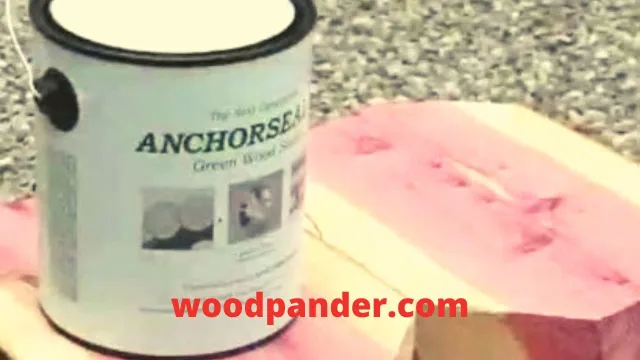
Anchorseal 2 is the hybrid of plant-based polymers and wax. Especially, it prevents checking and splitting of the ends of green logs and lumber. However, people like it due to its economical features. It protects your investment as well as extends the life of the deck.
Great For Use On
- Ipe decking
- Log cookies
- Live-edge wood slabs
- Exotic hardwood decking
- Hardwood logs and lumber
- Tropical hardwood lumber
- Woodturning blanks
- Brazilian walnut, mahogany, and tigerwood
Features
- Water-based formula
- Improve yield with less waste
- Non-toxic and no solvents
- Available in summer and winter formulas
- A wide range of packaging sizes including
- 1 Quart Can
- 1 Gallon Can
- 5 Gallon Pail
- 55 Gallon Drum
- 275 Gallon Tote
Pros
- Prevents end checking in deck boards
- Eco-friendly, easy soap and water cleanup
- Comes in clear and more than 35 colors
- End grain sealer for the log and lumber industry professional
Cons
- Poor packaging
- Expensive comparing the size of the can
How to Seal Log Ends
Sealing log ends is important to prevent the wood from drying out too quickly, which can lead to cracking and splitting. Here’s a step-by-step guide on how to seal log ends:
Materials Needed:
- Log end sealer or wood preservative: There are commercial log end sealers available, or you can use a mixture of paraffin wax and organic solvent.
- Paintbrush or sprayer: To apply the sealer to the log ends.
- Sandpaper or wire brush: To clean and smooth the log ends before sealing.
Steps:
- Prepare the Log Ends:
- Use sandpaper or a wire brush to clean any dirt or debris from the log ends.
- Smooth the ends to create a clean surface for the sealer.
- Choose a Sealer:
- Select a log end sealer or wood preservative. These are specifically designed to slow down the drying process and reduce the risk of cracks.
- Mix if Necessary:
- If you’re using a DIY mixture, melt paraffin wax and mix it with an organic solvent according to the instructions. This creates a sealant that can penetrate the wood fibers.
- Apply the Sealer:
- Use a paintbrush or sprayer to apply the sealer to the log ends generously. Make sure to coat the entire end surface.
- Allow Drying:
- Let the sealer dry completely according to the manufacturer’s instructions. This may take a few hours or longer.
- Apply Multiple Coats if Necessary:
- Depending on the type of sealer used, you may need to apply multiple coats for better protection. Follow the recommended drying time between coats.
- Monitor and Reapply:
- Keep an eye on the sealed log ends over time. If you notice any signs of drying or cracking, reapply the sealer as needed.
- Consider Other Preventative Measures:
- To further protect log ends, consider keeping logs elevated off the ground to prevent moisture absorption and minimizing direct exposure to sunlight.
Remember to follow the specific instructions provided by the manufacturer of the log end sealer you choose. Properly sealed log ends will help preserve the wood and maintain its structural integrity over time.
Anchorseal vs Anchorseal 2: A Detail Comparison
| Feature | Anchorseal | Anchorseal 2 |
|---|---|---|
| Purpose | Wood end sealer for preventing cracks | Wood end sealer for preventing cracks and checks |
| Application | Exterior wood surfaces | Exterior and interior wood surfaces |
| Formulation | Wax-based emulsion | Wax-based emulsion with added polymers |
| Drying Time | About 24-48 hours | About 24-48 hours |
| Color | Milky white | Milky white |
| Coverage | Approximately 1 gallon per 100 square feet | Approximately 1 gallon per 100 square feet |
| UV Protection | Limited UV protection | Enhanced UV protection |
| Water Resistance | Good water resistance | Improved water resistance |
| Check Prevention | Not specifically designed for check prevention | Specifically formulated to reduce checks |
| Cost | Generally lower cost | Generally higher cost |

After launching the newer version of Anchorseal, people might wonder what are the differences between Anchorseal 1 and Anchorseal 2.
So to find the differences and the superior ones, we do in-depth research, and for your convenience here we share the results. So let’s jump to it.
1. Product Type
Not to mention that anchorseal classic vs anchorseal 2 shared significant similarities as they both developed almost in the same procedure. Though, the newer version is a little different in product making than the older one. So here you’ll find a major difference.
- Anchorseal
Anchorseal is also called an “end seller“. It’s a premium type of wax emulsion that can prevent the hardwoods and logs from drying splits. Thankfully, it has amazing moisture loss balancing ability up to 90% from the wood and log. The only downside of this version is it’s not eco-friendly.
- Anchorseal 2
Anchorseal 2 is also a wax emulsion. But unlike the Anchorseal, this version is made more organically with plant-based polymer. Plus, it has lesser petroleum-based materials and is manufactured with renewable materials. Thus this more of a hybrid-type of end-sealer is much more eco-friendly while efficiently protecting woods from degradation.
Winner: As Anchorseal 2 is made out of the eco-friendly procedure, so here the winner is Anchorseal 2.
2. Ease Of Application
The application procedure of Anchorseal and Anchorseal 2 is quite similar. Both products should be applied with a brush, roller, or spray. Though the best choice is to use a spray.
Though, the two differ in the number of coatings. You won’t get the same result from the two coatings of both products. One may require less coating, whereas for the other you need to cover several coatings.
- Anchorseal
Anchorseal original offers a thick sealing than Anchorseal 2. It seems to flow and coat better. So the two coatings of Anchorseal will give you the best output. That’s why it takes less effort and less time which makes it easier for the user to apply and you’d get a better end sealing for the wood.
- Anchorseal 2
Anchorseal 2 requires a heavier coating than the Anchorseal original. Because Anchorseal provides a thinner sealing than the older one. To make it properly, you’ll need to apply a few more coatings. Using a roller might help you in that case.
Needless to say, applying more coating requires more effort and time. Even after all the hard work, the woods may crack. You have to use this sealer more to achieve the same effect as the previous one.
Tips: After using the Anchorseal, remember to Spray lacquer on the wood that will add more protection and provide more shine to the wood.
Winner: As Anchorseal 1 requires less time and effort for application thus here it wins.
3. Stability
The stability of an Anchorseal green wood sealer r means the period it can last on the wood. The more stability your wood sealer has, the better it will last longer.
- Anchorseal
As we mentioned above, Anchorseal provides a thicker coating. It provides a great thicker coating on the slab woods. It serves for long-lasting and prevents checking of the wood.
- Anchorseal 2
Thus Anchorseal 2 has a thinner coating than the classic, it can easily break and isn’t good at preventing up taking. As a result, it lacks stability. You will only find that Anchorseal 2 works better on the greenwoods.
Winner: The original Anchorseal.
4. Cost
For the cost, the two products might not have huge differences. But, sometimes Anchorseal 2 charges more.
- Anchorseal
Being the old version, Anchorseal 1 is the same price as before. In Particular, it doesn’t cost more than Anchorseal 2.
- Anchorseal 2
As Anchorseal 2 offers eco-friendly nature, the brand claims its production cost is more than Anchorseal 1, so its price is also a little higher.
Winner : Anchorseal
Check our latest guide: What Finish To Use For Wooden Coasters?
Related Questions
Can Wet Woods Be Sealed?
The seal doesn't be fruitful or neither lasts long if you apply it to the wet wood. So, first, you should wash the wood with a wood cleaner properly. Then dry the woods completely and then apply the sealer.
Does anchor seal dry clear?
Yes, anchor seal typically dries clear, forming a protective coating on the wood.
How To Air-Dry Wood Slabs?
First, gather the wood slabs in an open area where you get enough wind. Next, make a foundation that the slab stays on. Lay some perpendicular sticks between each slab that helps the moisture to leave the space.
How to remove Anchorseal from the wood surface?
You can easily remove Anchorseal from the woods. First, use a hot hair dryer or heat gun to melt the Anchorseal. After that, wipe them off with rags or paper. If it still doesn't remove properly, you can try some solvents like alcohol, Naphtha, and mineral spirits.
Is Anchorseal toxic?
Anchorseal claims it has no hazardous element. Particularly, Anchorseal 2 has a non-toxic, non-hazardous formula.
Is Anchorseal clear?
Yes, Anchorseal classic and Anchorseal 2, both are available in clear and above 35 colors.
What can I use instead of anchor seal?
You can use alternatives like latex paint, wax emulsion, or even diluted glue to seal wood.
What is anchor seal used for?
Anchor seal is used to seal the ends of freshly cut wood to prevent rapid moisture loss and cracking.
What to use to seal end of logs?
To seal the ends of logs, you can use:
-
Wax: Applying melted wax to the ends helps prevent moisture loss and cracking.
-
End Grain Sealer: Specifically designed sealers for end grain, creating a protective barrier.
-
Wood Preservative: Products with preservatives guard against decay and insect damage.
-
Polyurethane Sealant: Provides a durable, weather-resistant seal for log ends.
Anchorseal Vs Anchorseal 2: Which One Is Better?
After all, both the products have a wide range of similarities and differentiate only a few aspects. So it’s up to your choice which you’ll call the better.
However, we recommend Anchorseal as it offers great value for money. After all, learning the above discussion you can understand why we suggest Anchorseal. It can save you from costing more while providing the best wood sealing experience. So it’s better to stick with the premium Anchorseal version.
On the other hand, if you’re a nature lover and prioritize eco-friendly elements above everything, not to mention the Anchorseal 2 will be your best companion.
Summary
So that’s all for today’s discussion about Anchorseal or Anchorseal 2. We did good research and covered the main differences between the two products.
Hopefully, now you get a crystal clear idea and make up your mind about which one to pick. So why late? Grab your favorable sealer soon!

